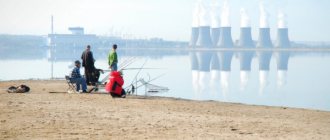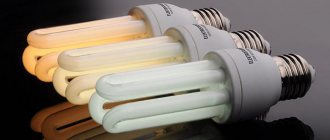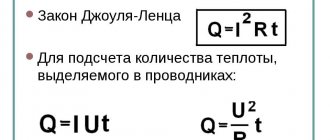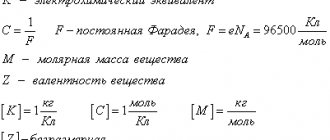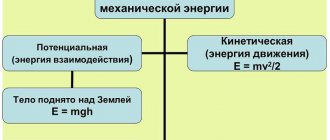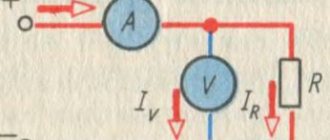Anyone who has learned to save electricity, water, heat, and gas in their apartment better understands the need for energy conservation in an apartment building and at work.
Let us give an example of water consumption in one of the regional centers of central Russia. There are three standards for water use in this city. The minimum reasonable sanitary standard of water consumption for natural needs and maintaining cleanliness is 30 liters per day per person. For residents who use water taps on the street, the water consumption standard is 50 liters per day per person. For residents living in apartment buildings with hot and cold water, the water consumption standard is 420 liters per day per person.
Water prices were increased and a wave of installation of water meters in apartments swept across the city. After the meters were installed, people began to limit themselves without changing their daily habits. As a result, the water consumption taken into account was 100-110 liters per day per person. The payback period for installing meters was 3-6 months. This means that then the consumer begins to pay 2-3 times less. This situation is the norm for almost all cities.
There are many such examples, and not only in water. At the heart of any saving is the will to eradicate bad habits of spending and accounting. But let's talk in more detail about ways to save energy at home.
Heat saving
Our country is northern and it is normal to insulate your home. There are several simple ways to insulate:
- Seal cracks in window frames and doorways. For this purpose, mounting foams, self-expanding sealing tapes, silicone and acrylic sealants, etc. are used. The result is an increase in air temperature in the room by 1-2 degrees.
- Sealing of windows and doors. Various self-adhesive seals and gaskets are used. Windows are sealed not only around the perimeter, but also between the frames. The result is an increase in the temperature inside the room by 1-3 degrees.
- Installation of new plastic or wooden windows with multi-chamber double-glazed windows. It is better if the glass has a heat-reflecting film, and ventilators are provided in the window design. Then the temperature in the room will be more stable in both winter and summer, the air will be fresh and there will be no need to periodically open the window, throwing out a large volume of thermal air. The result is an increase in room temperature by 2-5 degrees and a decrease in street noise levels.
- Installation of a second door at the entrance to the apartment (house). The result is an increase in room temperature by 1-2 degrees, a decrease in the level of external noise and gas pollution.
- Installing a heat-reflecting screen (or aluminum foil) on the wall behind the radiator. The result is an increase in room temperature by 1 degree.
- Try not to cover radiators with thick curtains, screens, or furniture - the heat will be distributed more efficiently in the room.
- Close the curtains at night. This helps keep the house warm.
- Replace cast iron radiators with aluminum ones. The heat output of these radiators is 40-50% higher. If radiators are installed with ease of removal in mind, it is possible to wash them regularly, which also helps to increase heat transfer.
- Glazing a balcony or loggia is equivalent to installing an additional window. This creates a thermal buffer with an intermediate temperature 10 degrees higher than outside in severe frost.
It is not uncommon when the problem is not with a lack of heat, but with its excess. In this regard, it is planned to begin installing apartment heat meters starting in 2012. This will force residents to regulate the temperature not with a window, but with thermostat valves installed on radiators.
History of energy saving programs in Russia
Like other strategically important tasks for the country, energy saving in Russia is carried out using a program-targeted management method that has been widely used for many years. The energy saving program is a set of measures to achieve specific goals and solve certain problems.
The first program “Energy efficient economy for 2002-2005”. and for the future until 2010." was approved on November 17, 2001 by Decree of the Government of the Russian Federation No. 796. As a result of the implementation of the program, positive changes occurred in the fuel and energy complex of the Russian Federation, however, due to failures in the program financing system in 2006, its effectiveness decreased significantly, and it was closed by Order of the Government of the Russian Federation No. 1446-r.
The second state program “Energy saving and increasing energy efficiency for the period until 2022” was in effect for only 2.5 years and was canceled by Government Decree N 479 of the Russian Federation in 2013.
Instead, another energy saving program “Energy Efficiency and Energy Development” was introduced, which lasted less than a year and was closed in 2014 by Decree of the Government of the Russian Federation dated April 15, 2014 N 321.
Today, there is a new program “Energy Efficiency and Energy Development” dated 2014 (approved by Decree of the Government of the Russian Federation of April 15, 2014 N 321). Time will tell its effectiveness, but it is already possible to assess the scale of the expected results: by 2022, the energy intensity of GDP should fall by more than 9% compared to the 2007 level. As part of this program, it is also planned to develop the production of coal, oil, gas, and the use of alternative energy sources in industry.
Saving electrical energy
- Replace conventional incandescent lamps with energy-saving fluorescent lamps. Their service life is 6 times longer than an incandescent lamp, consumption is 5 times lower. During operation, the light bulb pays for itself 8-10 times.
- Use local lamps when there is no need for general lighting.
- Make it a rule to turn off the lights when leaving the room.
- Turn off devices that remain in standby mode for long periods of time. Televisions, VCRs, and stereo systems consume energy from 3 to 10 W in standby mode. Over the course of a year, 4 such devices and chargers left in sockets will provide an additional energy consumption of 300-400 kWh.
- Use appliances of at least energy efficiency class A. Additional energy consumption for household appliances of outdated designs is approximately 50%. Such household appliances will not pay for themselves immediately, but given rising energy prices, the impact of savings will be greater. In addition, such equipment is usually more modern and has better characteristics.
- Do not install the refrigerator next to a gas stove or radiator. This increases the energy consumption of the refrigerator by 20-30%
- The refrigerator seal must be clean and fit tightly to the body and door. Even a small gap in the seal increases energy consumption by 20-30%.
- Cool foods to room temperature before placing them in the refrigerator.
- Don't forget to defrost your refrigerator more often.
- Do not cover the refrigerator radiator; leave a gap between the wall of the room and the back wall of the refrigerator so that it can cool freely.
- If you have an electric stove in your kitchen, make sure that its burners are not deformed and fit tightly to the bottom of the heated pan. This will eliminate unnecessary heat and electricity consumption. Do not turn on the stove in advance and turn off the stove a little earlier than necessary to fully cook the dish.
- Boil as much water in an electric kettle as you want to use.
- Use light colors when decorating the walls of your apartment. Light walls, light curtains, clean windows, a reasonable number of colors reduce lighting costs by 10-15%.
- Record your electricity meter readings and analyze how you can reduce your consumption.
- In some homes the computer is kept on all the time. Turn it off or put it in sleep mode if there is no need for it to work constantly. With continuous round-the-clock operation, the computer consumes 70-120 kWh per month. If continuous work is needed, then it is more effective to use a laptop or computer with reduced power consumption (Atom family processors) for such purposes.
In general, it is quite possible to reduce energy consumption by 40-50% without reducing the quality of life or compromising habits.
Increasing the efficiency of heating systems. Autonomous power plants
The most promising areas for increasing the efficiency of heating systems are the introduction of autonomous heat and power supply systems, installation of floor and air heating, as well as installations using renewable energy sources and heat recovery units (recovery).
The operating experience of autonomous boiler houses (Fig. 28) shows that they are reliable and economical. When supplying heat from these boiler houses, the consumer receives heat energy at tariffs lower than the current ones. Due to this, the construction of such boiler houses can pay for itself in almost one season.
Rice. 28. Autonomous boiler room equipment
The advantages of autonomous heat supply systems are as follows:
- absence of expensive external heating networks;
- the ability to quickly install and put into operation heating and hot water supply systems;
- low initial costs;
- simplification of solving all issues related to construction, since they are concentrated in the hands of the owner;
- reduction of fuel consumption due to local regulation of heat supply and absence of losses in heating networks.
Today, three heating schemes are most applicable (Fig. 29).
Rice. 29. Heating systems used
- Traditional heating system. The coolant liquid heated in the boiler is supplied to the system of pipelines and radiators. Circulating through this system, it gives off heat to the room.
- Air heating. After heating, the air is supplied to the heated rooms through special air ducts.
- Direct electric heating. The room is heated by infrared radiators, electric convectors and electric floor heating (Fig. 30).
In Belarus, the most popular is the first heating scheme, based on the circulation of a liquid heat carrier. However, in connection with the commissioning of the Belarusian NPP, the issue of wider use of electric heating is being considered.
Air apartment heating should be understood as an apartment heating system with an independent heat generator, which is serviced by residents.
Rice. 30. Electric heating systems used
In air heating systems, the coolant is air heated in an air heater to a temperature exceeding the room temperature and determined by calculation. From the heater, heated air is distributed through channels into heated rooms, in which it is cooled to room temperature. The air gives up its heat to compensate for heat loss, after which it flows back into the air heater (Fig. 31).
Rice. 31. Principles and design features of air heating systems
One of the ways to increase the efficiency of heating systems is recovery - this is the return of part of the thermal energy. Air recovery takes place in a recovery heat exchanger (heat recovery unit), where the heat exchange process takes place between warm exhaust and cold supply air. Warm air does not go outside uselessly, but gives up part of the thermal energy to the incoming cold air, which achieves an energy-saving effect (Fig. 32).
A
b
Rice. 32. Scheme (a) and design (b) of a recovery heat exchanger
Increased efficiency of heating systems is achieved, as shown in Chapter. 2, when using renewable energy sources (solar water heating collectors, heat pumps, biogas plants).
Saving water
- Install water flow meters. This will motivate you to reduce water consumption.
- Install lever switches on faucets instead of rotary faucets. Water savings of 10-15% plus ease of temperature selection.
- Do not turn on the water at full blast. In 90% of cases, a small jet is sufficient. Savings 4-5 times.
- When washing and showering, turn off the water when it is not needed.
- Taking a shower uses 10-20 times less water than taking a bath.
- Significant water savings will be achieved by using two-button flush tanks.
- It is necessary to carefully check for water leakage from the cistern, which occurs due to old fittings in the cistern. Replacing fittings is a cheap task, but the water savings are impressive. Through a trickle of leakage, you can lose several cubic meters of water per month.
- Check how the return flow to the hot water supply works. If there is no circulation during supply, then you will be forced to pump water through your neighbors' risers until you get it hot in your apartment. Of course, in this case, expensive “hot” water is simply drained into the sewer.
Site visitor additionally recommends: (thank you!)
Savings in the bathroom
- Don't leave the tap running all the time while brushing your teeth. Try to turn it on at the beginning and end of the procedure. You might even buy some mouthwash. This will allow you to use the money you save to protect the health of your teeth. Savings: 15 liters of water per minute (757 liters per week) with 4 family members.
- Turn off the tap while shaving. A small bowl will help you rinse your razor and save you money. Savings per person: 380 liters per week.
- Reduce your shower time to 5-7 minutes. Savings per person: from 20 liters of water with each shower.
- When taking a shower, it is not necessary to leave the water flow at maximum all the time. Use maximum pressure when rinsing and rinsing off foam. Savings per person: up to 20 liters of water with each shower.
- Fill the bath 50 - 60%. Savings per person: up to 20 liters of water with each bath.
Savings in the kitchen:
- When washing dishes by hand, fill one of the sinks (or another container) with water mixed with detergent. Then rinse the dishes treated with detergent in another sink under low pressure of warm water. Savings per person: up to 60 liters of water per day.
- Use the dishwasher with a full load whenever possible. Savings per person: up to 60 liters of water per use.
- Wash fruits and vegetables in a sink filled with water with the tap turned off. Savings per person: up to 10 liters of water per day.
- Do not use water to defrost meat products. You can defrost them by leaving them in the refrigerator overnight. Savings per person: up to 10 liters of water per day.
In general, reducing water consumption by 4 times is a completely feasible and low-cost task.
Assessing the effectiveness of using energy-saving technologies
In order to bring the level of energy consumption in a building closer to the passive house standard, it is necessary to use materials with high heat resistance, modern engineering equipment, renewable and secondary energy sources, in a word, measures that ensure energy saving. Energy efficiency is calculated based on the costs spent on a particular innovation in the house, and the effect that such a decision will bring to the owner.
First, it is necessary to calculate the impact of the new technology on the volume of production and consumption of a particular type of resource. In this case, you need to evaluate:
- The degree of resource savings (the difference in resources used by energy-efficient and traditional equipment during the billing period when generating the same amount of energy).
- The effect of energy production (the difference or ratio of the volumes of energy generated over a certain period by compared equipment options when using the same amount of resources).
These indicators will give us an idea of the need to move on to calculating the economic effect. It is calculated by comparing the costs spent on purchasing new (and possibly dismantling old) equipment, and the income from energy savings when replacing wasteful equipment with a more modern one (over a certain time period). This difference will be the effect that the owner will receive after a specific period of time after applying an energy-efficient solution. Typically, the installation of recuperators or solar panels pays off in 3-5 years.
State information system on energy saving
The State Information System (GIS) “Energy Efficiency” is an accumulation center of all information on energy saving. Designed for the population of the country, legal entities, government employees. In addition to informing about new energy-efficient solutions, the achievements of modern innovators, helping businesses and private home owners reduce energy consumption, this platform is also used by government services to collect information on the energy consumption of budgetary organizations.
The last function is implemented through the module “Information on energy saving and increasing energy efficiency”. Here, budgetary organizations and municipalities fill out energy consumption declarations online using the following data:
- Energy passport.
- Articles of association.
- Organizational staffing table.
- Invoices for fuel and energy resources.
- Technical passport of the building and data from the BTI.
This energy saving module allows saving resources of organizations that are required to report to federal authorities on energy resource expenditures, and also provides government agencies with the ability to quickly and thoroughly analyze and draw conclusions about changes in the country’s energy policy.
In conclusion, it is worth noting that energy saving is not just about saving money. First of all, this is caring about tomorrow, in which our children will have to live.

